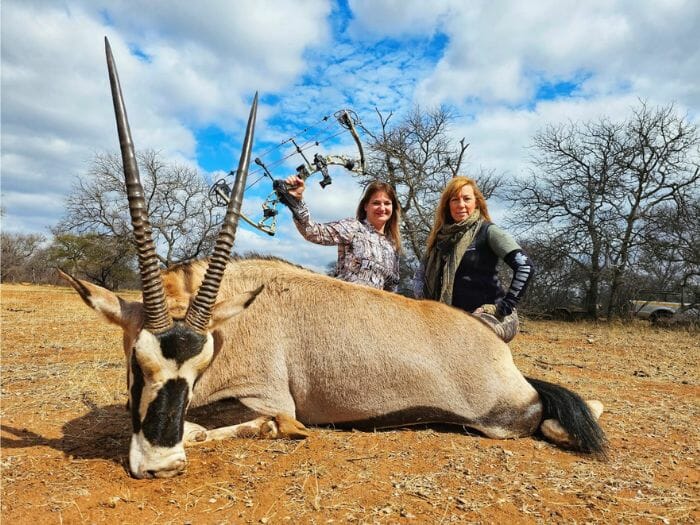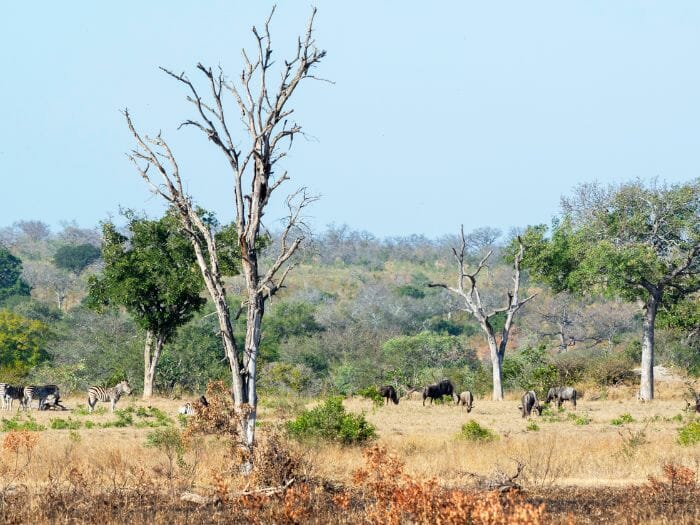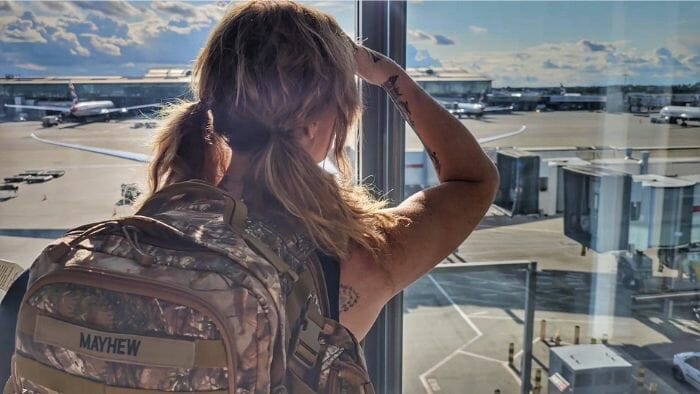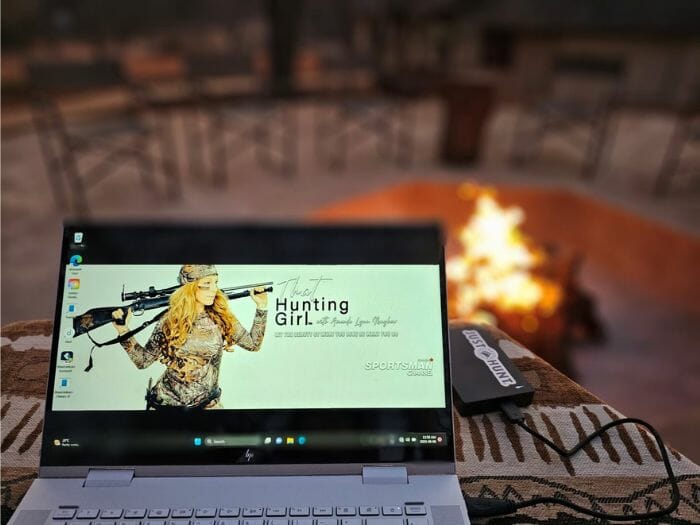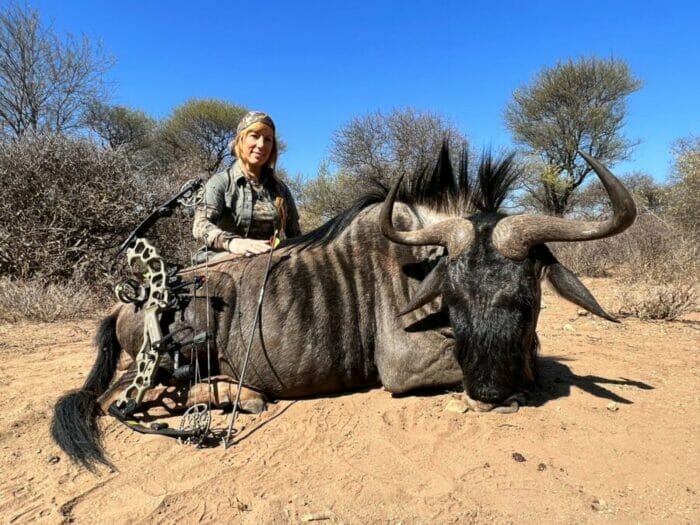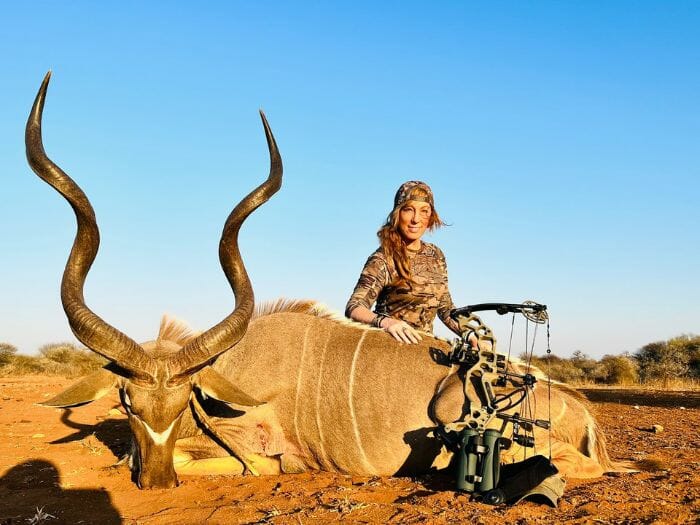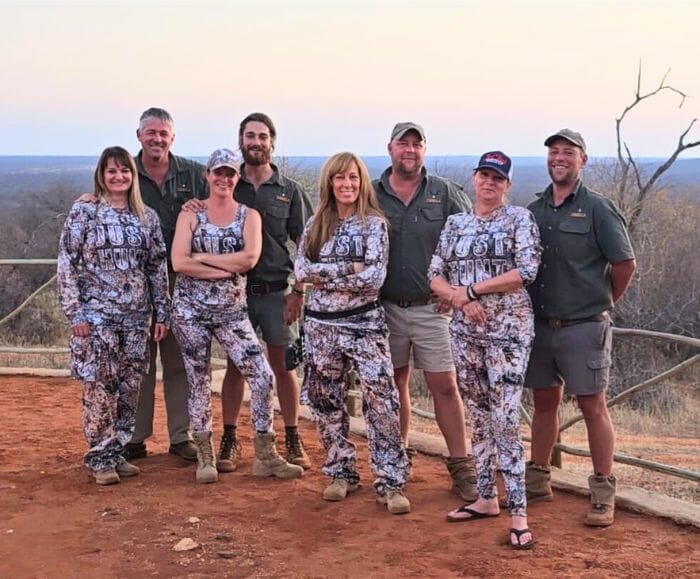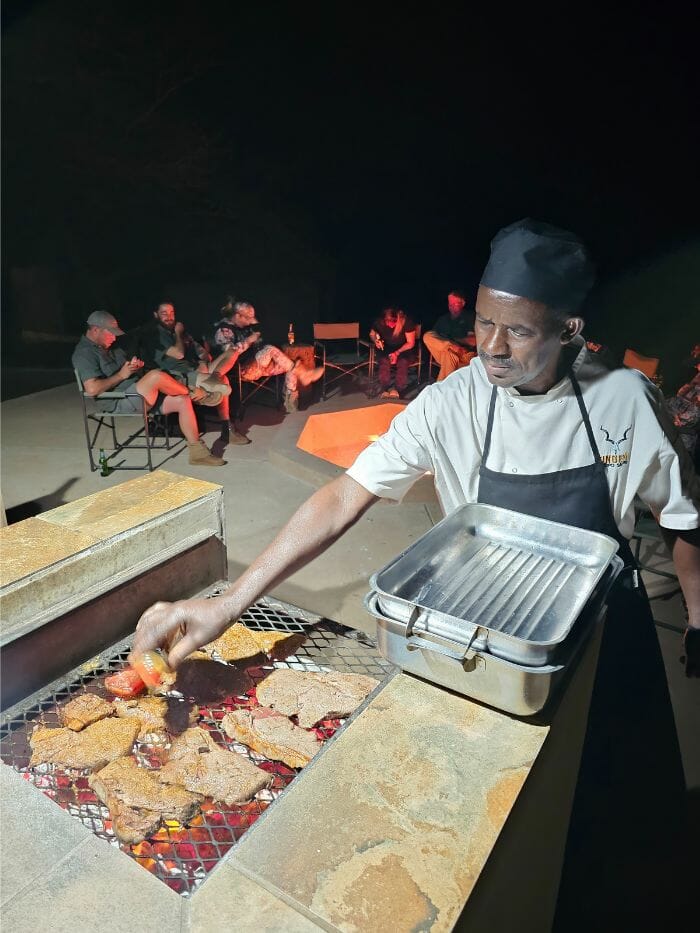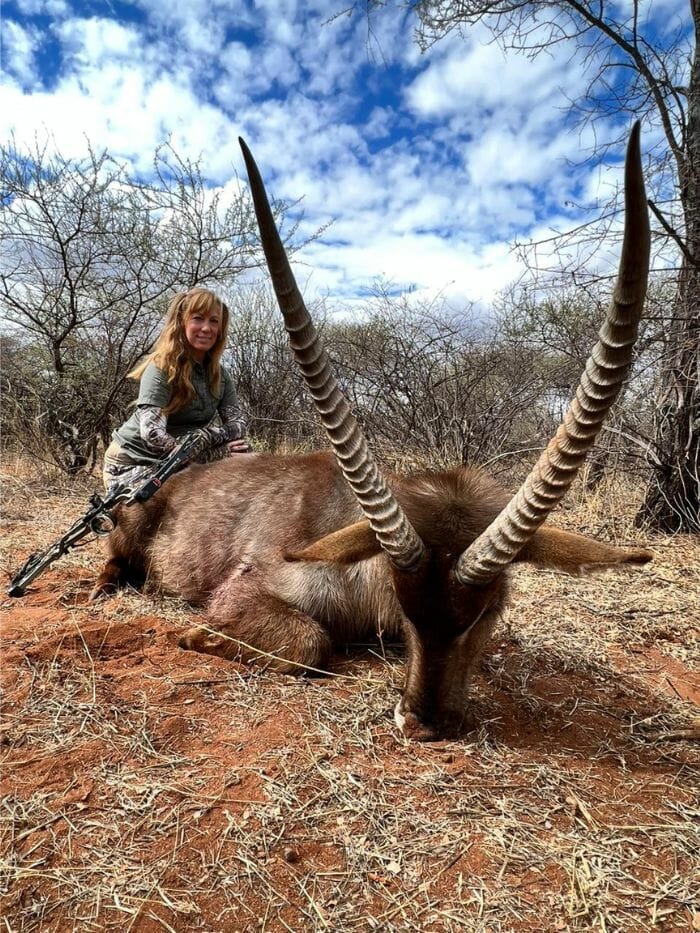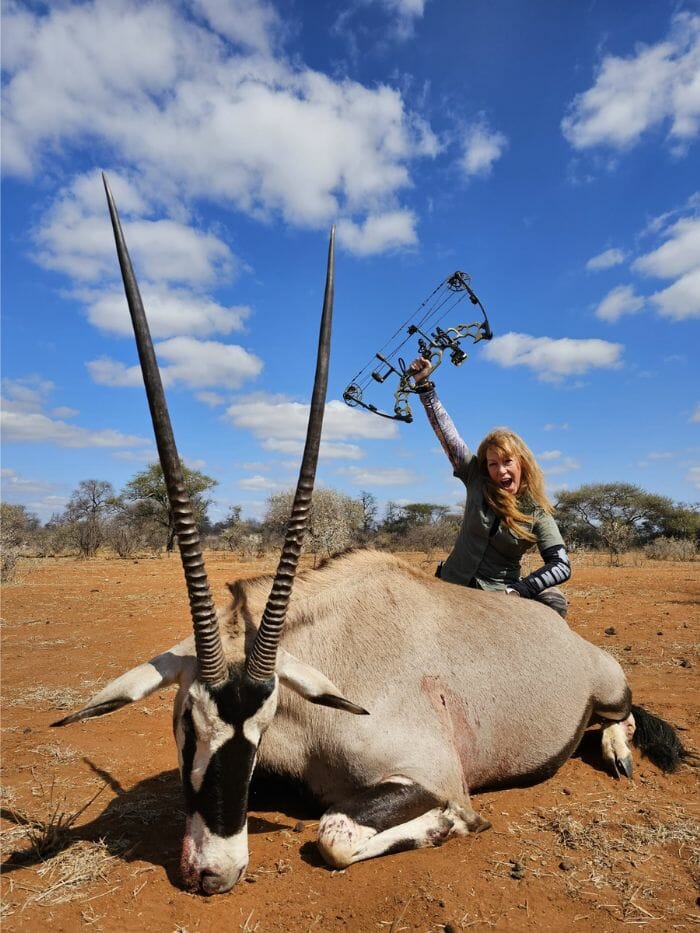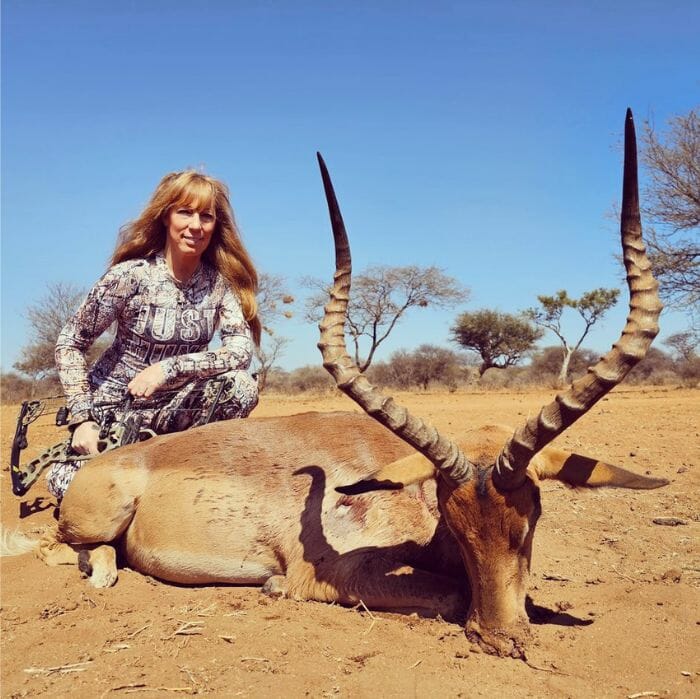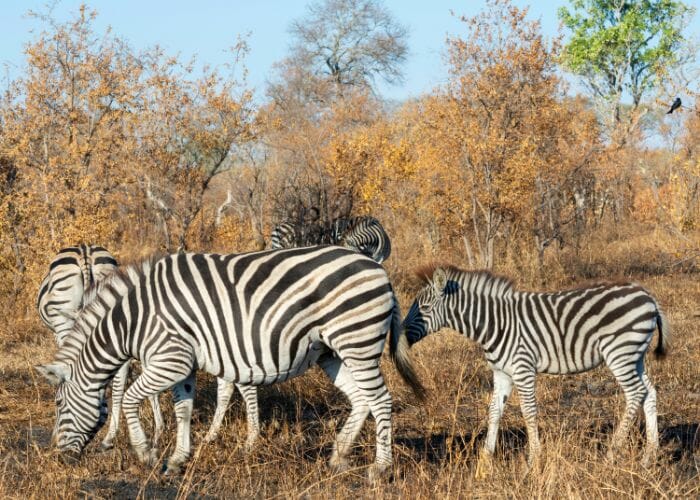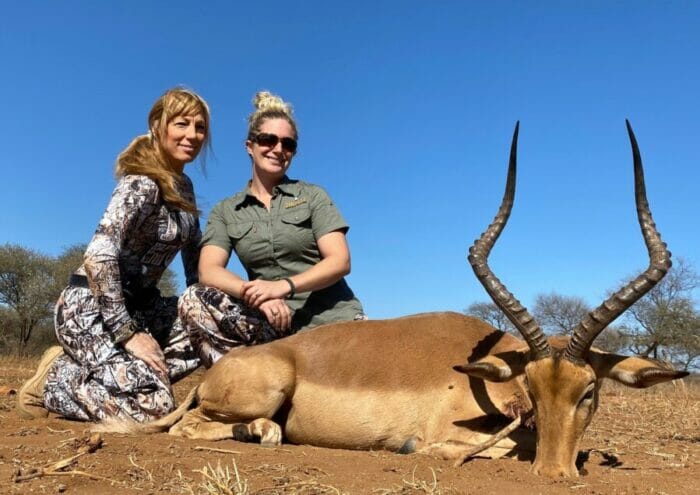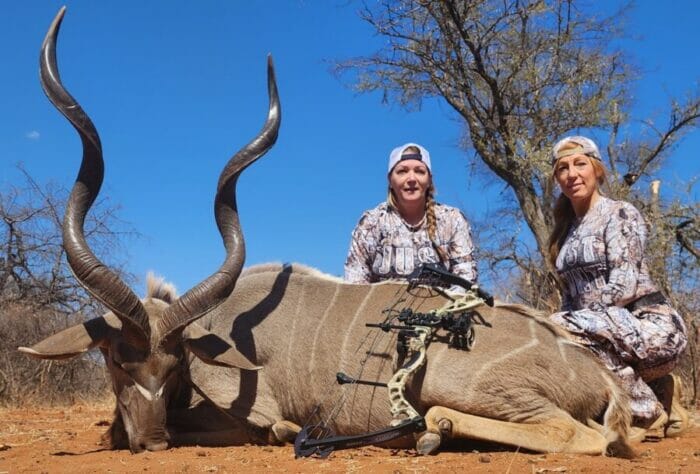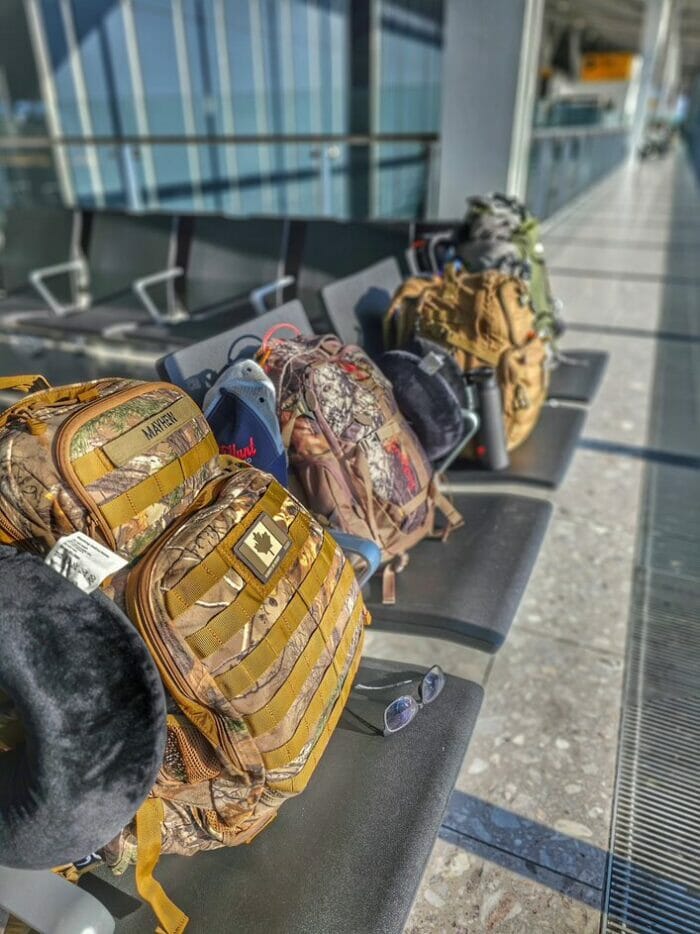Going to the Extreme – Africa Safari with Amanda Lynn
When we talk about adventure, challenges, and the untamed spirit of Africa, Amanda Lynn’s journey stands out. A seasoned hunter with ethics rooted in conservation and sustainable hunting, Amanda Lynn Mayhew ventured to South Africa to experience a bow hunting trip like no other. Equipped with curiosity and determination, Amanda Lynn joined three other hunters—Rae, Shannon, and Erika—to document a safari story that showcases the essence and challenges of sharing new experiences while bowhunting South Africa’s iconic game.
Expectations Versus Reality
For Amanda Lynn, Africa, at first glance, seemed an unlikely place for hunting. It was too far away, a place she considered extreme, primarily for hunting lions, which didn’t align with her ethics of pursuing edible game. Despite her initial reservations, through her research and conversations with Nico from Zingela Limpopo Safaris, her perspective began to shift. She gradually developed a different understanding of Africa—a land teeming with kudu, impala, and a sustainable hunting culture where “they use everything.”
While the distance was still daunting, her curiosity was piqued.
“I was ready to step up to the next level,” she said.
Change in Perspective
Once there, Amanda Lynn was swept off her feet. “Everyone is all smiles, offering you something to eat and something to drink as soon as you arrive at the camp,” she recalled about her arrival in Zingela Limpopo Safaris. The vast landscapes, dotted with zebras, gemsbok, and other majestic creatures, were a sight to behold. Everywhere Amanda Lynn looked, she saw the true beauty of Africa.
“You could see animals everywhere, as soon as you leave Johannesburg,” she said.
The private cabin tents overlooking the stunning Limpopo landscape and the warm and inviting community at Zingela, which means “hunter”, transformed Amanda Lynn’s outlook entirely. From her accommodations at the ranch to the mesmerizing topography, it seemed like a dream come true.
“You can tell where the terrain changes, and with the umbrella trees and shepard trees, it’s just stunning,” Amanda Lynn said. “You can see clearly through them too. It’s not like in North America where the trees are more dense and there’s more underbrush. And you can hear the zebras thundering away – it’s like being in a western.”
Why Bow Hunting in Africa
If she was going to go to the extreme, Amanda Lynn was going to hunt the extreme.
“Anyone can go to Africa with a gun. I wanted to be different. I wanted to be successful on a different level.” — Amanda Lynn
Amanda Lynn is the founder and host of Just Hunt, a hunter lifestyle brand that empowers and inspires hunters new and experienced alike. Within her brand, she has a clothing line, a hunting outreach program, and her signature business – That Hunting Girl TV show. For this trip, she filmed herself and her three travel partners, who were also bowhunters new to hunting in Africa, for an upcoming episode for That Hunting Girl.
“I wanted to showcase women who’ve never done this before, from all different parts of Canada, with all different backgrounds and ages, at all different hunting levels,” Amanda Lynn said.
Amanda Lynn brought her APA Archery Black Mamba 28 compound bow and used KuduPoint broadheads for the hunt. Shannon and Erika also brought compound bows, and Rae chose to hunt with a crossbow.
Amanda Lynn and her friends were ready for a challenge, and a challenge is what they received.
Bow Hunting African Game
The women’s hunting experience was diverse – each day bringing new animals, new challenges, and new awe-inspiring experiences. Each of the hunters was paired with a guide who fit their personality and experience level.
“We made sure they were super comfortable with their guides,” Amanda Lynn said. “They were paired up with that person for the week so it needed to be a good fit.”
Day 1 - Wildebeest and Kudu
Amanda Lynn describes her expectations for her first day of safari as “an open book.” She was ready for anything, and the surprises would keep pouring in.
“On my first day, I didn’t know what to expect. I was just like, ‘ Whoo hoo! Get in the truck, let’s go!’” she said.
Amanda Lynn was paired with Nico, the outfitter and professional guide for her safari. They were sitting in a ground blind, with the watering hole just 10 yards away.
“All of a sudden, animals are coming in from every corner of the bush! I didn’t even know what to look at, with all of the giraffes, warthogs, and kudu, and impalas,” she said.
A mature wildebeest came in, elderly, alone, likely kicked out of the herd.
“I asked a ton of questions – what’s going on with him, where should I shoot him,” Amanda Lynn said. “They will only take mature animals 8-10 years old, animals that have been kicked out of the herd, or cannot reproduce anymore. It’s Incredible they pay attention to such details like that. If you were just free-range hunting, you wouldn’t know how old a gemsbok was. I learned a lot about how they choose the animals they choose for you to harvest.”
Nico gave Amanda Lynn guidance on where to aim. The placements on where you shoot the animals in Africa are different than in North America. All of their organs are more forward and lower when shooting at animals in Africa. When the guide was recommending where to shoot the animal, Amanda Lynn thought, “That’s not where I’d shoot an elk.”
“You must listen to your guide,” she said, emphatically.
Amanda Lynn aimed for the spot Nico recommended and released her bowstring.
“I shot him!” she said. “Wow that just happened!”
Amanda Lynn was stunned when Nico asked if she was ready to shoot another animal minutes after downing her wildebeest.
“This is something we don’t ever do hunting big game in North America,” she said. “You go out, you shoot your animal, you process it, and you go home. But not in Africa.”
The two hunters went back to the ground blind and waited. Thirty minutes later, the animals were showing up again as plentiful as before. Amanda Lynn spotted two majestic kudu bucks, her dream animal.
“The way they walk, the way they carry themselves, oh my god, it is beautiful,” she said. One buck came within feet of the blind. “It was so close to me, I could see the nose hairs on him with my bare eyes.”
Amanda Lynn took the shot, and the arrow went completely through the animal and got stuck in a tree.
“I thought, ‘I wish I could call my dad,’” she said. It was a tradition of Amanda Lynn’s to call her father, Alexander Mayhew, after every successful hunt. He was her mentor and biggest cheerleader, and they cherished the tradition until her father passed away in 2022.
Day 2 - Africa Hunting Successes
“I’m so proud of the girls. It was great to sit back and listen to them talk about their amazing experiences.”
There were challenges, too. One of the hunters had missed an animal and was dealing with disappointment for not landing her shot.
“I didn’t know exactly what happened, but when I got back to camp, we talked through it,” Amanda Lynn said. “The girls were my No. 1 focus. I wanted them to succeed, but also know they could mess up. Don’t be hard on yourself. Bad shots happen – it’s hunting, not grocery shopping.”
“Everyone, including myself, learned a lot and came back with a lot of confidence in our hunting itself,” she added. “I am proud of each one of them.”
Every day when the women would return from the hunt, they would be greeted by the staff and guides at the lodge. They would tell their stories around a sunken camp fire while eating that day’s harvest.
“Everyone’s like, ‘Did you get anything? Did you see anything?’” Amanda Lynn said. “You tell your stories back and forth, and all the guides would sit back and listen. They’re all smiling and super-proud of their hunters.”
Days 3 & 4 - Waterbuck and Gemsbok
The next two safari days were spent in an elevated stand watching roans, waterbucks, giraffes, and monkeys walk by.
“In the stand, you can talk – whisper – and it doesn’t spook the animals,” Amanda Lynn said, noting yet another difference between the African fauna and the more skittish North American game, which require complete silence to harvest. She passed the time getting to know Nico better, since they are both avid hunters and successful business owners.
“In the stand, you can talk – whisper – and it doesn’t spook the animals,” Amanda Lynn said, noting yet another difference between the African fauna and the more skittish North American game, which require complete silence to harvest. She passed the time getting to know Nico better, since they are both avid hunters and successful business owners.
“We both always have a whole series of things going on, so talking about business while checking out the animals was something Nico and I did pretty much every day,” Amanda Lynn said.
A waterbuck came in and she harvested it from 60 yards, a heart shot.
Day 4 provided a more contentious animal for Amanda Lynn’s bow to contend with. An aggressive female gemsbok came up to the watering hole strutting and butting animals.
“Nico didn’t even get the words out of his mouth. My arrow went right through, and she expired about 60 yards away,” Amanda Lynn said.
She warned that it’s important to make 100% sure that a downed beast is actually dead before approaching it. She said to rely on your guide, but the mortal signs are the same for any big game: eyes open, mouth open, tongue hanging out – it’s dead.
“If its eyes are still closed, you can’t be sure – this goes for any animal,” Amanda Lynn said. “A gemsbok doesn’t seem like an aggressive animal, but it will stick you in the gut.”
“Gemsbok is delicious, by the way,” she added.
Day 5 - Impala
It was Amanda Lynn’s last blind hunting day, this time back on the ground, hunting impala. It was the smallest of the animals she harvested on her safari, and also the most fidgety.
“They get startled quickly, but they won’t run far. You can have your bow pulled back, and the impala will hear a mosquito fly by, and they will shiver and jump,” she said.
She advised to focus on waiting for the animal to be standing solo and making sure it is 100% distracted.
“They will jump at the sound of your bow string,” Amanda Lynn said. “They can jump up to 10 meters. They are fast, beautiful, and delicious.”
Amanda Lynn’s final shot of her Africa safari was a complete passthrough.
Day 6 - Zebra
On her last day in Africa, Amanda Lynn’s guide asked if she wanted to do a zebra stalk.
“That is right up my alley – I’m super active,” she said. “I was not sure how it would work with a bow.”
Nico attempted to call a zebra stallion in. He said that, when you call a zebra, it will either take the herd and run away, run you down, or answer back.
“You want an answer back so you can continue to stalk the zebra,” Amanda Lynn said. I had a wonderful tracker. We called, and I was able to hear the zebras run away.”
She never had an opportunity to get a shot off. Amanda Lynn and Nico ended up walking 10 km in total.
“When we were finally done, around 2 p.m., it was beating hot. We were done,” she said.
They jumped into a tracker’s truck and started back for the lodge. On their way, Amanda Lynn had a premonition.
“I told Nico – just watch, going to come around the blind, they’ll be there.”
Sure enough, they came around the corner of one blind, where Amanda Lynn had got the impala the day before, and there’s an entire herd of zebras. The group jumped out of the truck and headed downwind, walking about 2 km around to come out behind the herd. But the zebras were gone.
“I wanted to experience that style of hunting in Africa,” Amanda Lynn said about the stalk. “But if I had stayed in the stand, I would have got a zebra!”
From wildebeests to gemsbok, each day presented new opportunities for Amanda Lynn and her friends. Sharing tales of the day, celebrating each other’s victories, and learning from each other created a tapestry of memories.
Purpose and Conservation
Amanda Lynn was initially skeptical about hunting in Africa. But, diving deep into the work being done around conservation, she realized this was a step-up in her hunting journey. The outfitter’s meticulous approach to conservation was evident in how specific animals were chosen for hunting, ensuring only mature or non-reproducing animals were targeted.
“It’s incredible they pay attention to such details like that,” Amanda Lynn said. “If you were just free-range hunting, you wouldn’t know how old a gemsbok was. I learned a lot about how they choose the animals for you to harvest.”
This sustainable approach, as well as the use of the entire animal after it is taken, resonated with Amanda Lynn.
“Whatever meat is not consumed by us, there are 23 employees at the ranch, and it goes to them to their families,” she said. “Nothing goes to waste. I was very proud to be connected with such a camp that has the same ethics I was raised with.”
Back to Africa?
Amanda Lynn did not hesitate when asked if she’ll go back to Africa for another hunt. She shared her plans to return at the same time, same place next year, organizing two week-long Amanda Lynn bowhunting camps. The first week will be with four women, and the second week will be with gentlemen.
“I’ll be hunting with each person at least once during the week,” she said.
Her co-travelers, Rae, Shannon, and Erika, echoed her sentiments, with each sharing the unique touchpoints that imprinted Africa on their hearts.
“We have shared trials and tribulations,” Amanda Lynn added. “The only way to explain Africa is to visit Africa. Plain and simple. I have never been anywhere in my life that has taken my breath away in all of its elements.”
Advice for Bowhunting in Africa
Navigating a new continent with different terrains and rules requires careful preparation. Amanda Lynn stressed the importance of learning about the accommodations, the ranch’s acreage, and other amenities, even down to the availability of electricity.
“With the girls, I had to ask if we could bring hair curling irons,” Amanda Lynn said. “Because the ranch is run on solar, we couldn’t, because electricity was limited.”
“With the girls, I had to ask if we could bring hair curling irons,” Amanda Lynn said. “Because the ranch is run on solar, we couldn’t, because electricity was limited.”
She advises packing light, since laundry services are often provided. Bring your essential hunting gear, including binos and UV-protected polyester camo clothes. Amanda Lynn also recommended reading up on the experience ahead of your trip. Books like “Green Hills of Africa” by Ernest Hemingway and “The Perfect Shot” by Kevin Robertson can offer insights and tips for hunting in Africa.
“Practice, practice, and practice some more,” Amanda Lynn said, emphasizing listening to the guides for a successful hunt.
Reflections on Africa
Amanda Lynn’s experience encapsulated the sheer wonder of Africa. The abundance of animals, the raw beauty, and the pure adrenaline of the hunt made for an exhilarating combination. It’s clear that Africa had left an indelible mark on her.
Her journey in Africa transcends the usual tales of hunting. It’s a tale of discovery, understanding, respect, and love for the land and its creatures. Africa, in its raw, unfiltered beauty, offers an experience unlike any other, and Amanda’s story is a testament to this fact. As she aptly puts it, “The only way to explain Africa is to visit Africa.”

